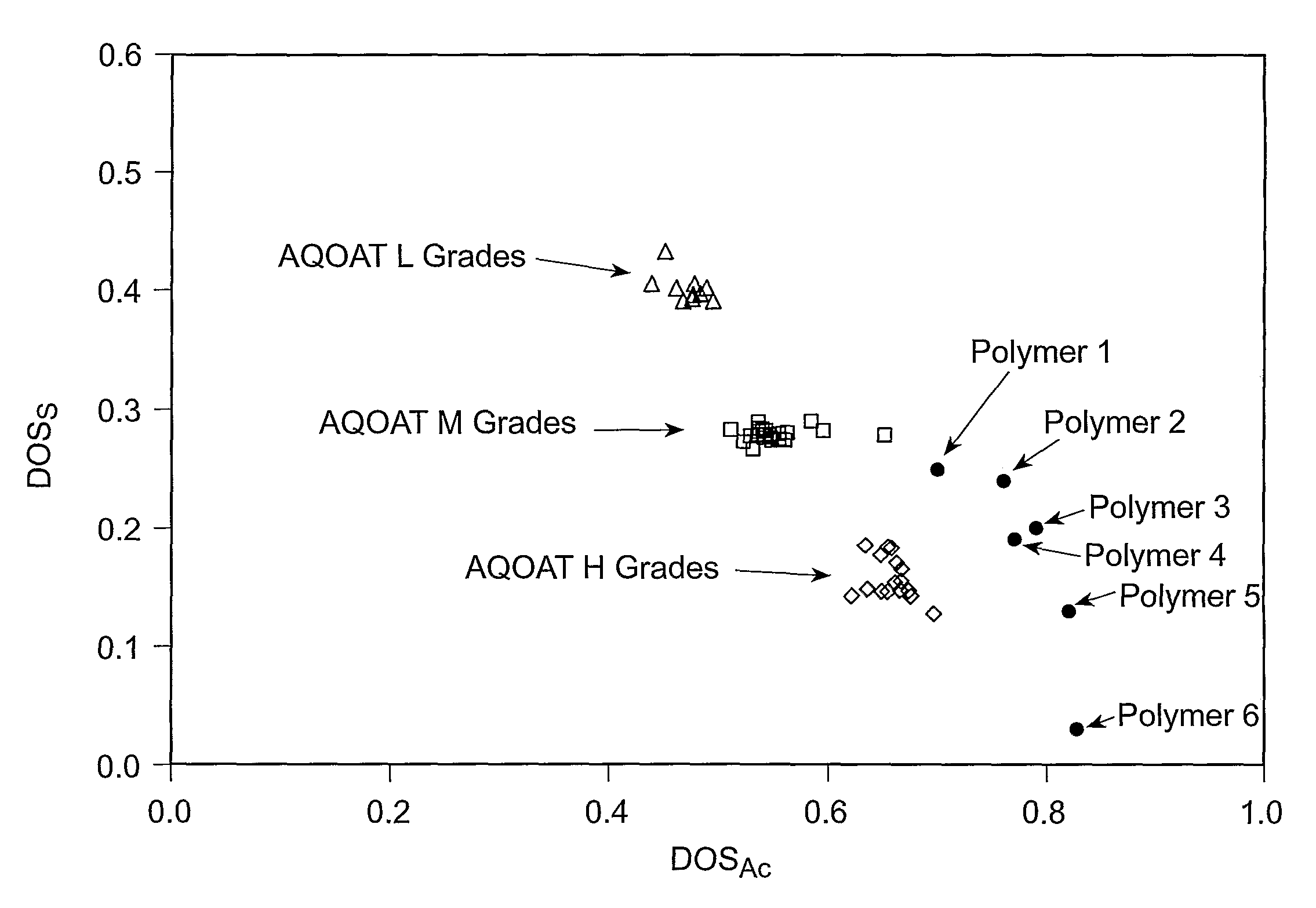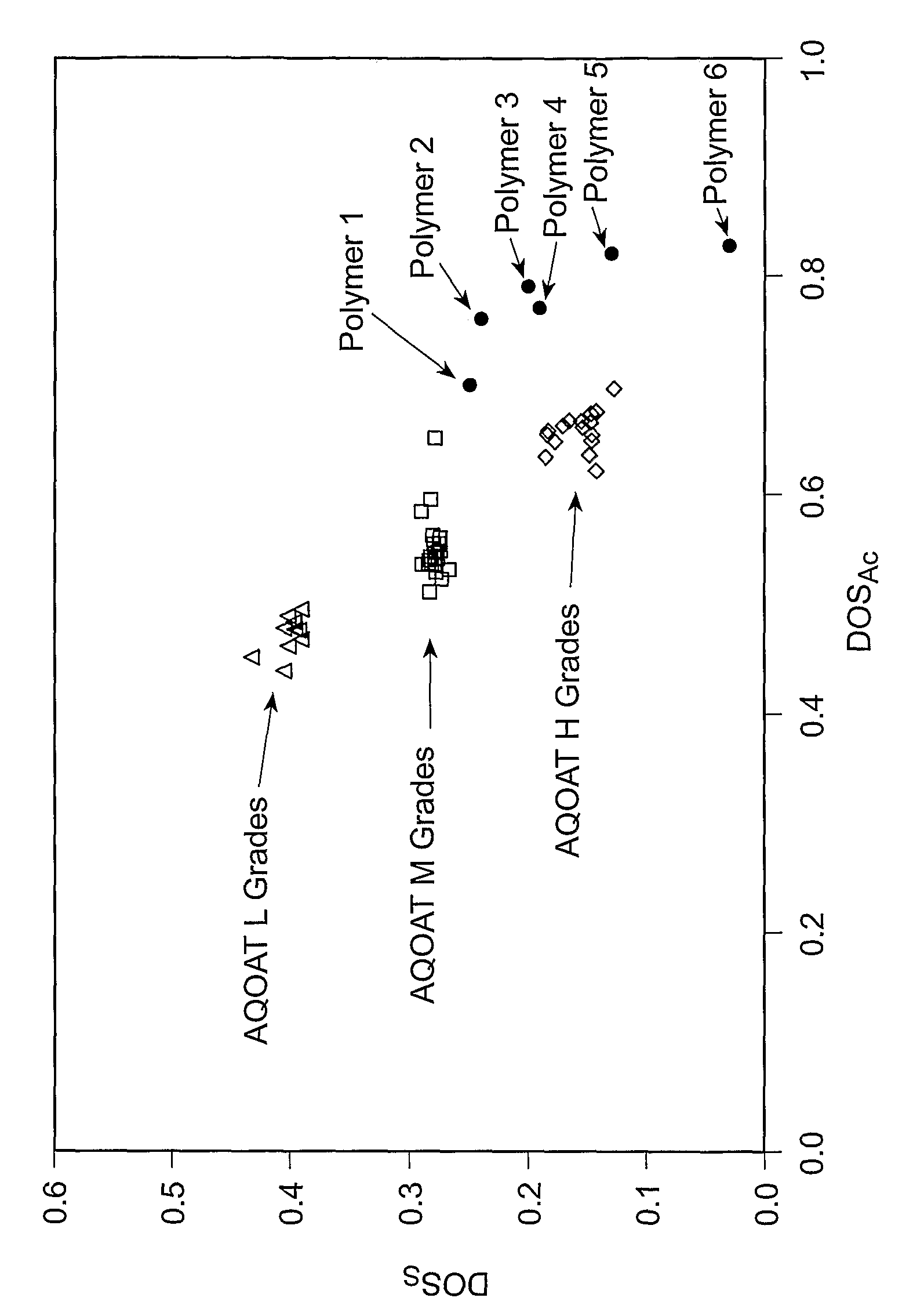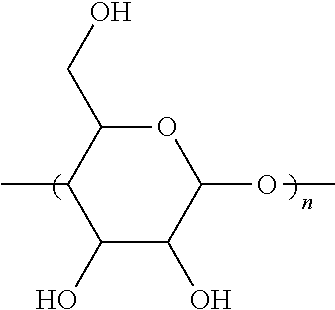Pharmaceutical compositions with enhanced performance
a technology of hydroxypropyl methylcellulose and composition, applied in the field of hp, can solve the problem that etsu only provides a limited selection of properties, and achieve the effects of enhancing the concentration of dissolved drugs, enhancing drug absorption, and effective at maintaining high drug concentrations
- Summary
- Abstract
- Description
- Claims
- Application Information
AI Technical Summary
Benefits of technology
Problems solved by technology
Method used
Image
Examples
example 1
In Vitro Evaluation of Concentration Enhancement
[0257]Dispersions 2, 3, 4, and 10 were evaluated in in vitro dissolution tests using a microcentrifuge method. In this method, 3.6 mg of the spray-dried dispersions was added to a 2-mL microcentrifuge tube. The tube was placed in a 37° C. sonicating bath, and 1.8 mL of phosphate-buffered saline (PBS) at pH 6.5 and 290 mOsm / kg was added. The samples were quickly mixed using a vortex mixer for about 90 seconds. The theoretical maximum concentration of drug if all the drug dissolved was 1000 μg / mL. The samples were centrifuged at 13,000 G at 37° C. for 1 minute. The resulting supernatant solution was then sampled (100 μL) and diluted with 200 μL methanol and then analyzed by HPLC. The tubes were then mixed on the vortex mixer and allowed to stand undisturbed at 37° C. until the next sample. Samples were collected at 4, 10, 20, 40, 90, and 1200 minutes.
[0258]As controls, in vitro tests were performed using the procedure described above, ex...
example 2
In Vivo Tests
[0262]Dispersions 1 and 4 were used as oral powders for constitution (OPC) for evaluating the performance of the dispersions in in vivo tests using male beagle dogs. The OPC was dosed as a suspension in a solution containing 0.5 wt % hydroxypropyl cellulose METHOCEL® (from Dow Chemical Co.), and was prepared as follows. First, 7.5 g of METHOCEL® was weighed out and added slowly to approximately 490 ml of water at 90-100° C. to form a METHOCEL® suspension. After all the METHOCEL® was added, 1000 mL of cool / room temperature water was added to the suspension, which was then placed in an ice water bath. When all of the METHOCEL® had dissolved, 2.55 g of polyoxyethylene 20 sorbitan monooleate (TWEEN 80) were added and the mixture stirred until the TWEEN 80 had dissolved, thus forming a stock suspension solution.
[0263]To form the OPC, sufficient quantity of the test composition to result in a 90 mgA amount of Drug 1 was accurately weighed and placed into a mortar. (“mgA” refe...
example 3
Evaluation of Solubility of Drug in Polymers
[0267]The solubilities of drug in HPMCAS polymers were determined using a double-scan differential scanning calorimetry (DSC) analysis of the dispersions as follows. The DSC analysis was carried out on either a TA Instruments DSC2920 or a Mettler DSC 821, calibrated with indium. DSC samples were prepared by weighing 2-4 mg of the dispersion in an aluminum pan with a pinhole. The sample was heated under nitrogen, at a rate of 5° C. per minute from about −20° C. to about 140° C. This analysis typically showed a single Tg for the dispersion that was significantly higher than the Tg for pure amorphous drug. Heating above the Tg allows the drug to phase separate from the dispersion if the drug solubility in the polymer is lower than the drug loading.
[0268]The sample was then cooled and the sample was scanned a second time using the procedures outlined above. If the solubility of drug in the polymer was lower than the concentration of drug in th...
PUM
| Property | Measurement | Unit |
|---|---|---|
| pH | aaaaa | aaaaa |
| solubility | aaaaa | aaaaa |
| molecular weight | aaaaa | aaaaa |
Abstract
Description
Claims
Application Information
 Login to view more
Login to view more - R&D Engineer
- R&D Manager
- IP Professional
- Industry Leading Data Capabilities
- Powerful AI technology
- Patent DNA Extraction
Browse by: Latest US Patents, China's latest patents, Technical Efficacy Thesaurus, Application Domain, Technology Topic.
© 2024 PatSnap. All rights reserved.Legal|Privacy policy|Modern Slavery Act Transparency Statement|Sitemap



